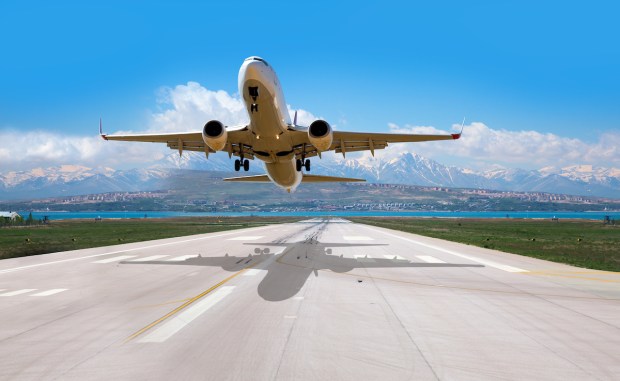Business Travel Looks to Take Flight With Cloud Benefits

It has been a failure to launch for business travel coming out of the pandemic.
The year 2019 is still the one to beat from a profit and volume standpoint, but many airlines and third-party firms are debuting a new strategy to spur growth: targeting small- to medium-sized businesses (SMBs) with digital– and even artificial intelligence (AI)-driven solutions to lure them back on board and counteract falling travel numbers.
While that won’t change the reality that global business travel and events costs are expected to keep climbing through the remainder of 2023 and into 2024, it may help provide some cushion.
After all, SMB spend represents a strong growth driver within the travel segment, no matter the degree of uncertainty in the macroeconomic environment.
Capturing that spend can provide firms with a valuable tailwind, so to speak.
Many industry observers don’t believe that business travel will return to pre-pandemic levels for at least another year. Delays are coming from both sides, as airlines are taking longer than expected to get planes out of storage and back in the air, struggling to hire the numbers of cabin crew and pilots they need, as well as twiddling their thumbs waiting for new planes to be manufactured.
A lot of the additional airline capacity coming online is geared toward international travel, not domestic routes.
It may just be the perfect time to try out some new digital tricks and help drive differentiation within the competitive world of business travel.
An Ongoing Consumerization of the B2B Travel Experience
Airlines and provider platforms are increasingly taking their cues from what consumers want in order to create products that better appeal to businesses and their internal decision-makers.
“You don’t have to look much further than B2C today for the future of B2B tomorrow, when it comes to things like efficiency and digitization,” Corcentric CEO Matt Clark told PYMNTS in June. “Some of the newer generations rising up in organizations just won’t accept some of the things that have been taken for granted as status quo for decades. They’ll say this is too difficult, this needs to change.”
Clark added that “digitization is table stakes now.”
On its second-quarter 2023 earnings call, American Express Global Business Travel CEO Paul Abbott told investors that “77% of our total transactions [come] through digital channels.”
“The power of large language models (LLMs) and generative AI enables us to potentially take that to another level,” he added.
Observers say AI can be harnessed to prompt more fine-tuned choices as businesses book trips, helping bring a new level of personalization to the B2B journey.
This growing trend of bringing a high-touch experience to the B2B occasion is why consumer-facing travel website Expedia is seeing “tremendous momentum” in its new B2B business, Expedia Group Vice Chairman and CEO Peter Kern said during the company’s quarterly earnings call Aug. 3.
In one win for Expedia’s B2B segment, the firm partnered during the second quarter with Mastercard. The travel website’s technology will power the payments network’s global system of issuers so that customers can spend their loyalty points on travel experiences.
Echoing this sentiment, Worldline’s Consulting Services Global Head of Travel Solutions Laurie Gablehouse told PYMNTS in July that, “people want to control the aspects of what they are going to do and how their money is being spent.”
A Digital Foundation to Drive Differentiation
Travel providers and sector players spent much of their most recent earnings calls emphasizing to investors that they have established foundations of digital innovations being used to deploy actions that improve customer satisfaction.
“The demand for digital just keeps expanding,” Gloria Colgan, senior vice president and global head of product at Visa Commercial Solutions, told PYMNTS in an interview posted Friday (Aug. 11).
For airlines, where corporate travel has been a mainstay of revenue dependability for decades, the post-pandemic reality is spurring a shakeup of how corporate travel is booked — and paid for.
B2B payments are generally behind the innovation curve compared to their consumer counterparts, something that is true even in the technology industry, where one-third of companies said in a survey their B2B buying experiences are “broken” due to legacy processes.
“The big opportunity is for [B2B payments] to be seamless and just work,” Finexio CEO and founder Ernest Rolfson told PYMNTS in June. “The usability component is critical and largely missing.
Solving usability might just lead to wheels up and clear skies for business travel.
For all PYMNTS B2B coverage, subscribe to the daily B2B Newsletter.

